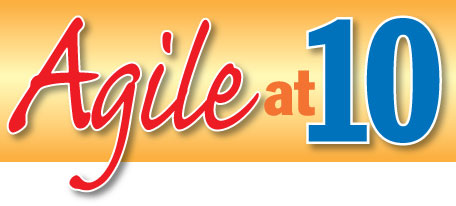
As the Agile Manifesto approaches its 10th anniversary, SD Times is speaking to several of its authors to discuss the gathering at Snowbird, what perspective they brought to the meeting, and what they might do differently. The 12 original authors will reunite at the Agile Alliance Conference this August in Salt Lake City.
In this installment, we speak to Arie van Bennekum, the only non-U.S/ citizen to sign the Agile Manifesto.
SD Times: What was your reason for attending the first gathering at Snowbird?
van Bennekum: At the time, I was representative of the DSDM Consortium International. DSDM is an agile method, one of the earliest (or the earliest), and the intellectual property was and still is with the DSDM Consortium. The Consortium has mapping across the world with different chapters. At the time, Dane Falkner [of Surgeworks, headquartered in Salt Lake City] was preparing a North American chapter.
In order to share and focus activities across similar methods, he called a meeting in Snowbird. I represented DSDM as a method and as a Consortium, given my role in the organization and my level of expertise (knowledge and experience) on DSDM. I am still proud of the fact that we, together at Snowbird, defined the term “agile” as the overall umbrella for our methods. The word has become a monument in the industry, something we were not at all aware of at that time.
What area of development had you been working on, and how did you see it meshing with the other efforts going on at that time? Are you still working to advance that specialty? Where is it today?
I had been focusing on the project management and coaching of teams and project managers at the time. Also I had been specializing in facilitation, a core technique in DSDM [now Atern]. I am still doing all this. At the moment, I am still running Atern projects, teaching at the Rotterdam University for Professional Education (Atern, project management and facilitation), training in the business environment, coaching teams, and doing a lot of work in facilitation (both in and outside IT-environments). The last 10 years, my development has been on facilitation, group dynamics, team performance and assessments, and quick scans to know where a group stands and what to do to move forward.
Looking back, is there anything you would have included or struck from the Manifesto knowing what you know now?
I still like the Manifesto as it is. In my opinion, it is universal, not bound to technique, tools or environments. This also implies the one change I would like to make. I would like to replace “software” with “product” or something similar. As said, I also work outside IT-environments and use it there a lot as well. From my point of view, I would like to see that in the Manifesto.
Where do you see agile development moving in the next five years?
I expect globalization to take part in this development. I don’t expect major changes on the methods, but I do see opportunities for people to use it on teams that are based in different areas of the world. This is already a little in place, but very often the right tooling, technique and funds available to overcome the geographical distance are not sufficient.
In time, I expect cheaper solutions for good communication within the teams and with customers. When this can be achieved, I expect a major development in this. I can see a redefinition coming of models like “offshoring” and “nearshoring.”





